Classic Americana
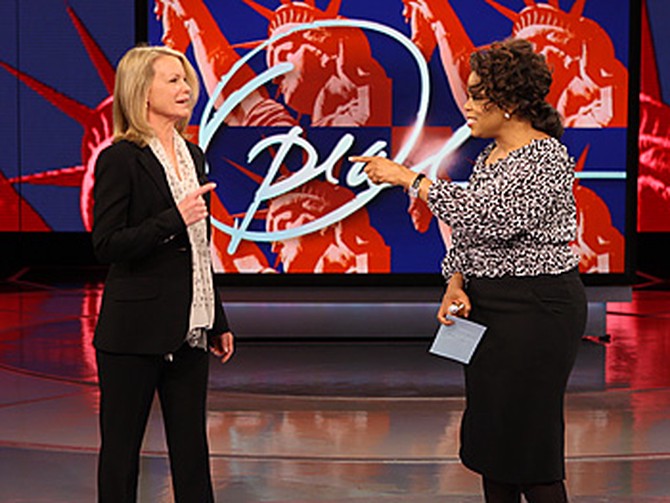
Charlie Girl Shelley Hack
Many Americans can sing along to their favorite jingles and remember the advertisements that made an impact on their lives. When Oprah was a 20-something businesswoman, she says one commercial stood out from the rest.
In the '70s, Revlon cast all-American beauty Shelley Hack in advertisements for Charlie perfume. In the short television spot, the "Charlie girl" glides through an evening out with class and confidence. Oprah says this ad defined the woman she dreamed of becoming. "I wanted to stride like her with confidence. I wanted to be this fabulous," Oprah says.
For almost a year, Oprah's been asking her staff to track down the original footage...and they finally found it! As an added bonus, Shelley came all the way to Chicago to discuss her days as a glamorous spokeswoman.
What started as a commercial became so much more to many women. "It was a time when women were changing," Shelley says. "Women looked at [the ad] and said, 'I want to be like that.'"
After appearing in Revlon commercials, Shelley got her big break on Charlie's Angels. "I was lucky," she says. "There were two things I was in that were about making women feel a little more empowered."
In the '70s, Revlon cast all-American beauty Shelley Hack in advertisements for Charlie perfume. In the short television spot, the "Charlie girl" glides through an evening out with class and confidence. Oprah says this ad defined the woman she dreamed of becoming. "I wanted to stride like her with confidence. I wanted to be this fabulous," Oprah says.
For almost a year, Oprah's been asking her staff to track down the original footage...and they finally found it! As an added bonus, Shelley came all the way to Chicago to discuss her days as a glamorous spokeswoman.
What started as a commercial became so much more to many women. "It was a time when women were changing," Shelley says. "Women looked at [the ad] and said, 'I want to be like that.'"
After appearing in Revlon commercials, Shelley got her big break on Charlie's Angels. "I was lucky," she says. "There were two things I was in that were about making women feel a little more empowered."
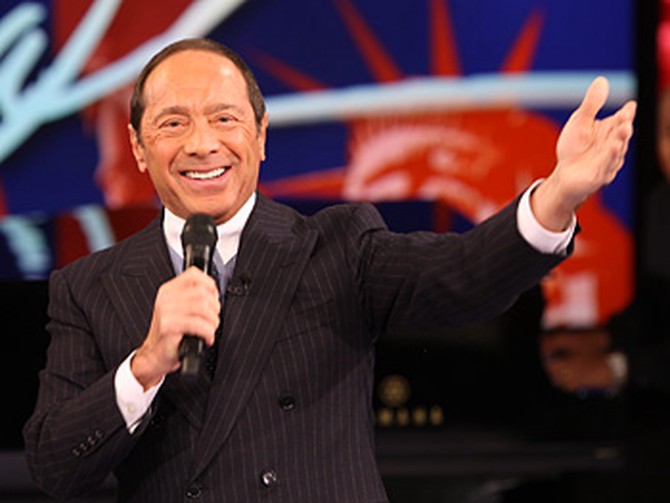
Paul Anka's Kodak Moment
Back in the day, commercials didn't rely on special effects and splashy sets to sell products. One Kodak ad from the '70s brings back fond memories with the simple question, "Do you remember the times of your life?"
This classic commercial features music legend Paul Anka singing a song he helped pen for the company. Over the years, Paul has written more than 900 songs, including "My Way," the hit made famous by Frank Sinatra, and the Tonight Show theme song!
"That was written for Johnny [Carson]," Paul says. "I ran into him in New York, and he said, 'Well, there's this show I'm going to do, Paul. I think I'll do it for a couple of years, and I want to change a few things.' So I wrote this and sent it to him, and he called me back and said, 'I love it. It's simple, and we'll do it.'"
Paul says he calls that catchy tune his "school" song. "I put my kids through school on that," he says. "Five girls, folks."
This '60s teen idol isn't handing over the microphone just yet. His latest release, Classic Songs: My Way, is in stores now.
This classic commercial features music legend Paul Anka singing a song he helped pen for the company. Over the years, Paul has written more than 900 songs, including "My Way," the hit made famous by Frank Sinatra, and the Tonight Show theme song!
"That was written for Johnny [Carson]," Paul says. "I ran into him in New York, and he said, 'Well, there's this show I'm going to do, Paul. I think I'll do it for a couple of years, and I want to change a few things.' So I wrote this and sent it to him, and he called me back and said, 'I love it. It's simple, and we'll do it.'"
Paul says he calls that catchy tune his "school" song. "I put my kids through school on that," he says. "Five girls, folks."
This '60s teen idol isn't handing over the microphone just yet. His latest release, Classic Songs: My Way, is in stores now.
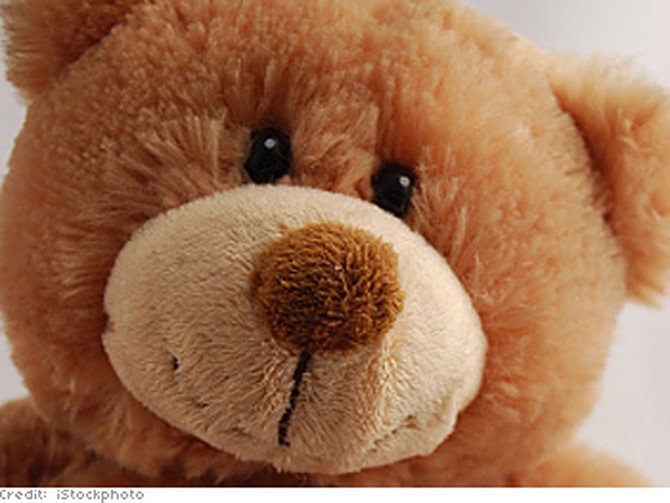
Where Teddy Bear Gets Its Name
There's a lot more to America than 50 states and 300 million citizens. Like baseball games, apple pies and Fourth of July fireworks, some iconic images are part of the fiber of our great nation. Though they're familiar, you may not know the stories behind them.
One cuddly piece of Americana, the Teddy bear, got his name in 1902 from President Theodore Roosevelt. The president refused to shoot a bear cub during a hunting trip...and the rest is history.
One cuddly piece of Americana, the Teddy bear, got his name in 1902 from President Theodore Roosevelt. The president refused to shoot a bear cub during a hunting trip...and the rest is history.
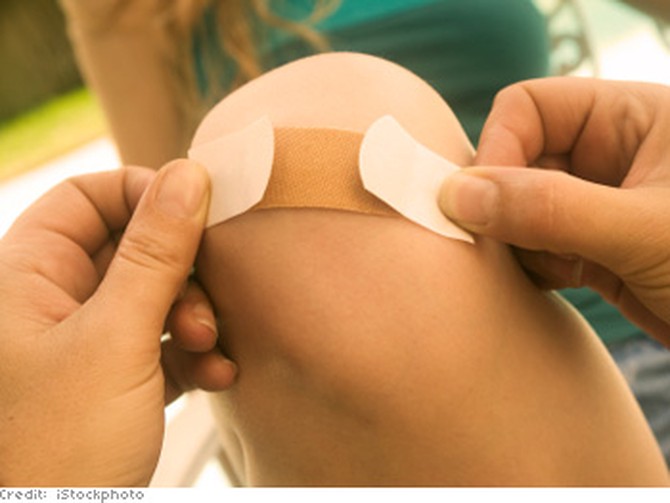
How Band-Aids Came to Be
You've probably worn them on your elbows, knees and feet, but do you know how Band-Aids came to be?
In the 1920s, a cotton buyer invented the handy bandage for his accident-prone wife. He sold his idea to his employer, Johnson & Johnson, who began mass producing Band-Aids for the rest of the country. Americans have been stuck on them ever since!
In the 1920s, a cotton buyer invented the handy bandage for his accident-prone wife. He sold his idea to his employer, Johnson & Johnson, who began mass producing Band-Aids for the rest of the country. Americans have been stuck on them ever since!
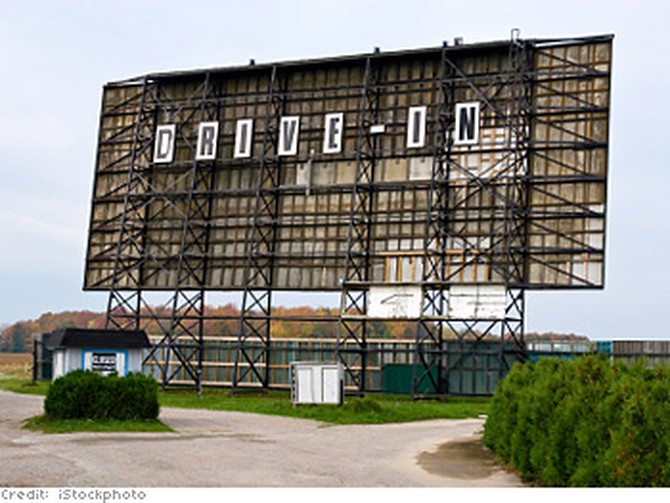
The First Drive-In Theater
Before the days of online ticketing and stadium seating, many Americans saw Hollywood's latest hits from inside their automobiles.
In 1933, Richard Hollingshead opened the first drive-in theater near his home in New Jersey. The concept caught on, and soon after, thousands of drive-ins sprang up across the country. Over the years, the popularity of drive-ins has declined, but they've been immortalized in films like Grease.
In 1933, Richard Hollingshead opened the first drive-in theater near his home in New Jersey. The concept caught on, and soon after, thousands of drive-ins sprang up across the country. Over the years, the popularity of drive-ins has declined, but they've been immortalized in films like Grease.
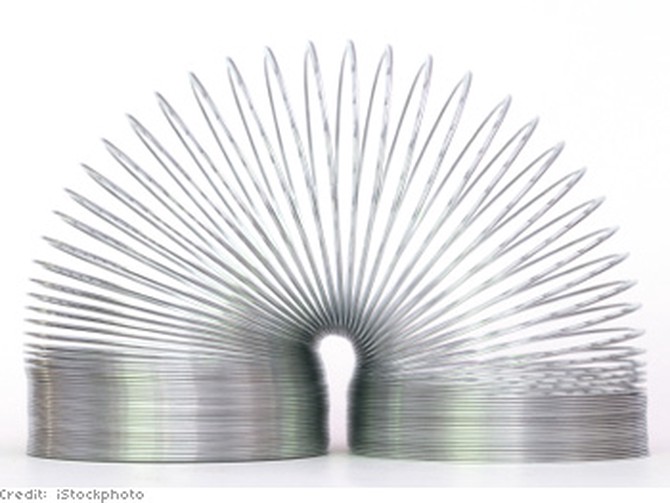
Slinky's Accidental Invention
It's a wonderful toy. It's fun for a girl and a boy...it's Slinky!
The Slinky, an iconic American plaything, was invented by accident in the 1940s. Engineer Richard James came up with the idea after a tension spring he was working with fell to the floor and began slinking away.
A few years later, the Slinky debuted at Gimbel's Department Store in Philadelphia. Since then, more than 300 million have been sold throughout the world.
The Slinky, an iconic American plaything, was invented by accident in the 1940s. Engineer Richard James came up with the idea after a tension spring he was working with fell to the floor and began slinking away.
A few years later, the Slinky debuted at Gimbel's Department Store in Philadelphia. Since then, more than 300 million have been sold throughout the world.
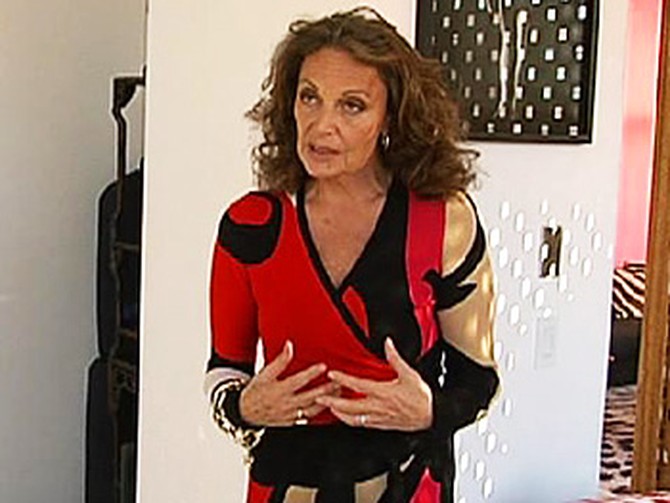
Diane Von Furstenberg's Dress Success
From Jackie Kennedy's pillbox hat to Superman's cape, clothing has also helped shaped America's identity.
In 1974, fashion designer Diane Von Furstenberg began selling her signature wrap dress, which remains a classic to this day. The style was so influential to women's fashion, one of her designs is now on display at New York's Metropolitan Museum of Art.
In 1974, fashion designer Diane Von Furstenberg began selling her signature wrap dress, which remains a classic to this day. The style was so influential to women's fashion, one of her designs is now on display at New York's Metropolitan Museum of Art.
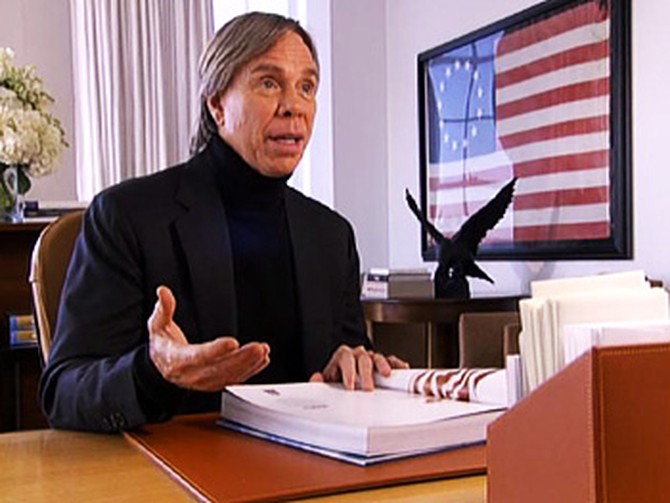
Tommy Hilfiger's Iconic America
Oprah says the idea for this American tribute came from fashion designer Tommy Hilfiger's book, Iconic America, which features everything from Mickey Mouse and Monopoly to Microsoft and Muhammad Ali.
"I believe pop culture makes the world go round," Tommy says. "I thought it was important to put all of this great stuff in between two covers of a book and remind the world that we are a great country. Yes, we made some mistakes...and there's the good, the bad and the ugly in the book, but mostly it's great stuff."
To share his love of pop icons, Tommy's sending everyone in Oprah's audience home with a signed copy of his book!
"I believe pop culture makes the world go round," Tommy says. "I thought it was important to put all of this great stuff in between two covers of a book and remind the world that we are a great country. Yes, we made some mistakes...and there's the good, the bad and the ugly in the book, but mostly it's great stuff."
To share his love of pop icons, Tommy's sending everyone in Oprah's audience home with a signed copy of his book!
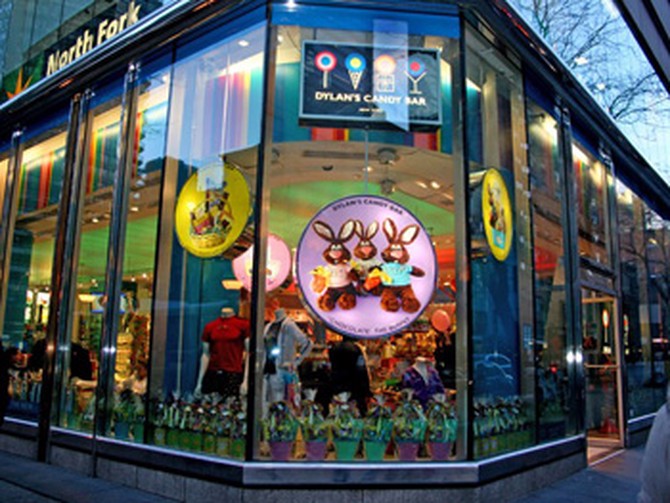
Making New York Sweeter
America got a whole lot sweeter when Dylan's Candy Bar opened its flagship store in Manhattan in 2001. The colorful, fanciful store serves 5,000 treats, including old-school favorites like Pixie Stix and Bazooka bubble gum.
Dylan's Candy Bar was created by Dylan Lauren, the daughter of iconic American fashion designer Ralph Lauren. Dylan says she discovered her passion for sweets as a child, when she loved to hang out at the corner candy shop.
"I loved candy my whole life," Dylan says. "I saw Willie Wonka [and the Chocolate Factory] when I was 6, and I just loved the set design and the lollipop trees and the candy cane columns. When we did Dylan's Candy Bar, we wanted it to be this crazy, fun candy land for kids and the kid in the adult."
Dylan says there's a lot more to Dylan's candy bar than just candy. "It's three levels of candy, and candy from around the world. Candy gift baskets. Candy apparel. Candy pajamas," Dylan says. "There's candy rain boots. There's candy pillows. Candy umbrellas. Candy bags. Candy jewelry. It's really anything for anyone, even if you don't want to eat candy or you just love the colors."
Dylan's Candy Bar was created by Dylan Lauren, the daughter of iconic American fashion designer Ralph Lauren. Dylan says she discovered her passion for sweets as a child, when she loved to hang out at the corner candy shop.
"I loved candy my whole life," Dylan says. "I saw Willie Wonka [and the Chocolate Factory] when I was 6, and I just loved the set design and the lollipop trees and the candy cane columns. When we did Dylan's Candy Bar, we wanted it to be this crazy, fun candy land for kids and the kid in the adult."
Dylan says there's a lot more to Dylan's candy bar than just candy. "It's three levels of candy, and candy from around the world. Candy gift baskets. Candy apparel. Candy pajamas," Dylan says. "There's candy rain boots. There's candy pillows. Candy umbrellas. Candy bags. Candy jewelry. It's really anything for anyone, even if you don't want to eat candy or you just love the colors."
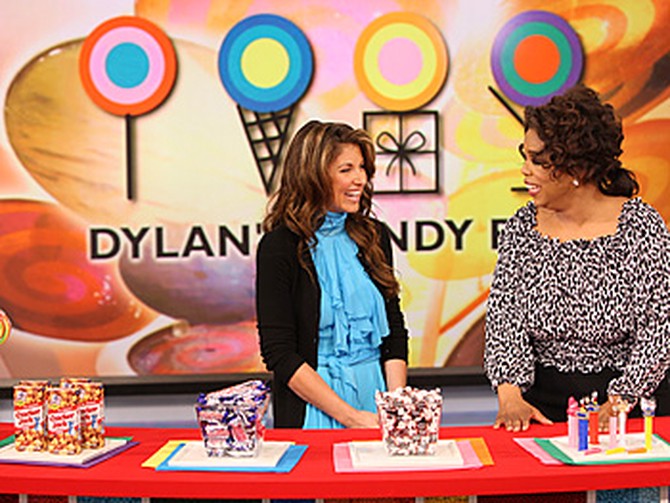
Adults who visit Dylan's Candy Bar can find treats they have loved since they were little—and some that are part of American history. Candies such as Pixie Stix, Pez, Good 'N Plenty and America's first wrapped candy, Tootsie Rolls, are longtime favorites. "It's all got nostalgic pieces to it," Dylan says. "Dylan's Candy Bar really captures nostalgia and has all these American classics under one roof."
Many of the candies at Dylan's store are well-known and loved—but do you know where they got their names? For example, Dylan says Baby Ruth chocolate bars were not named after the legendary baseball player Babe Ruth. "It's actually after the President Grover Cleveland's daughter," she says.
The words "Cracker Jack" weren't always synonymous with molasses-covered popcorn and peanuts. "It got its name because 'crackerjack' is slang for, 'That's really great,'" Dylan says. "A customer at the Chicago World's Fair was trying it and was like, 'Yeah, that's crackerjack!'"
Many of the candies at Dylan's store are well-known and loved—but do you know where they got their names? For example, Dylan says Baby Ruth chocolate bars were not named after the legendary baseball player Babe Ruth. "It's actually after the President Grover Cleveland's daughter," she says.
The words "Cracker Jack" weren't always synonymous with molasses-covered popcorn and peanuts. "It got its name because 'crackerjack' is slang for, 'That's really great,'" Dylan says. "A customer at the Chicago World's Fair was trying it and was like, 'Yeah, that's crackerjack!'"
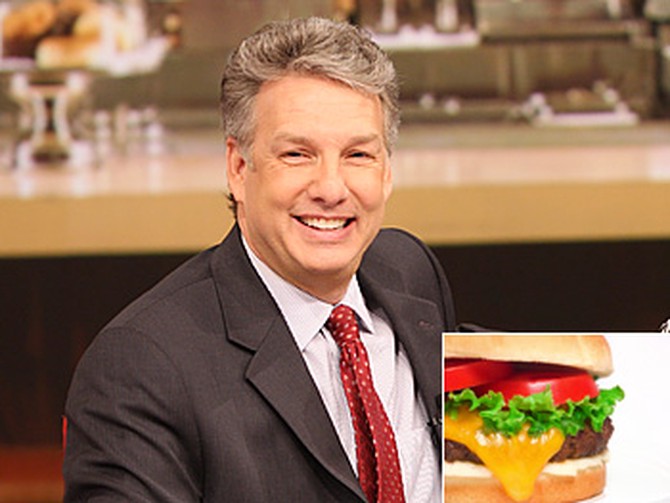
Classic American Hamburgers
Hamburgers are the number one fast food in America, but the creator of this undisputed American favorite is at the center of a major food fight.
According to the Library of Congress, restaurant owner Louis Lassen was the first to serve a beef patty between two slices of bread in 1900. Some food historians claim Fletcher Davis unveiled the burger sandwich at the St. Louis World's Fair in 1904. White Castle co-founder Walter A. Anderson says it was his idea to serve hamburgers on buns.
No matter who invented them, Marc Summers, the host of the Food Network show Unwrapped, says hamburgers beat out the hot dog as America's favorite fast food after World War II.
"When the soldiers came home, they got into their automobiles. Especially in Southern California, there were drive-ins, a la Happy Days, and it became culture right there," Marc says. "White Castle was the number one burger chain."
According to the Library of Congress, restaurant owner Louis Lassen was the first to serve a beef patty between two slices of bread in 1900. Some food historians claim Fletcher Davis unveiled the burger sandwich at the St. Louis World's Fair in 1904. White Castle co-founder Walter A. Anderson says it was his idea to serve hamburgers on buns.
No matter who invented them, Marc Summers, the host of the Food Network show Unwrapped, says hamburgers beat out the hot dog as America's favorite fast food after World War II.
"When the soldiers came home, they got into their automobiles. Especially in Southern California, there were drive-ins, a la Happy Days, and it became culture right there," Marc says. "White Castle was the number one burger chain."
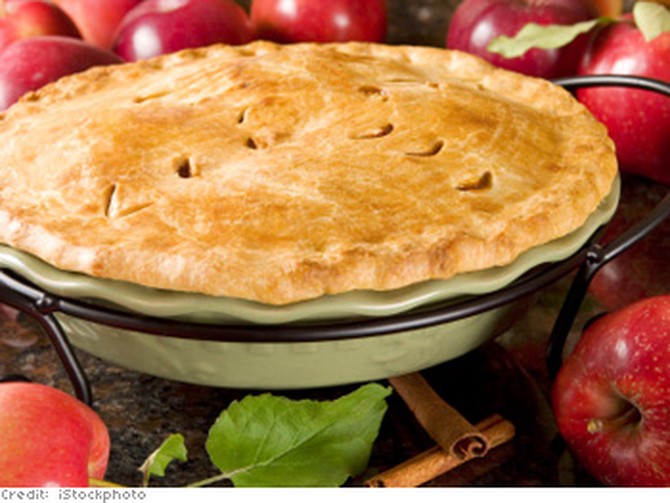
As American As Apple Pie
Nothing is as American as apple pie—or is it? Marc says apple pie actually was first eaten in England in the 14th century. The iconic dessert crossed the pond along with the Pilgrims, who brought apple seeds to the New World.
In America, Marc says, apple pie was available to all, but some pies became a sign of aristocracy. "The poorer people didn't have enough money for flour and lard, so they didn't have the upper crust [on their pie]," Marc says. "Only the rich people could do that, and that's where the term 'upper crust' originated."
In America, Marc says, apple pie was available to all, but some pies became a sign of aristocracy. "The poorer people didn't have enough money for flour and lard, so they didn't have the upper crust [on their pie]," Marc says. "Only the rich people could do that, and that's where the term 'upper crust' originated."
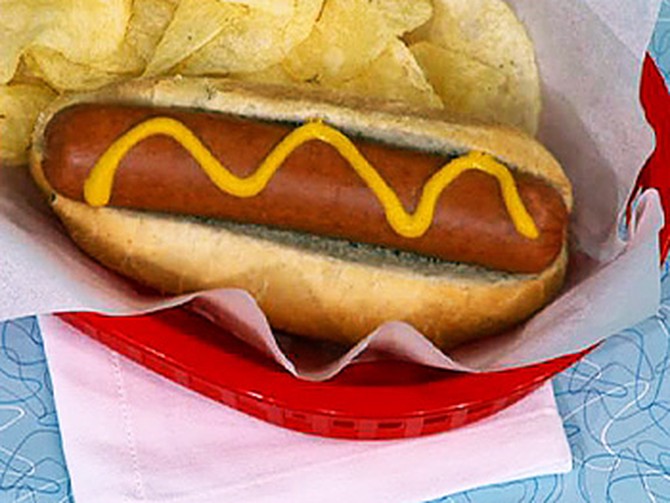
The Hot Dog Glove
Hot dogs are another American favorite that originated overseas. Marc says hot dogs started out with Vienna sausages in Austria and Germany. In 1904, they were introduced to Americans at the World's Fair in St. Louis—served with a glove.
"When hot dogs first came out, they did not have buns. They gave you a glove to keep the grease and to keep the heat away from you," Marc says. To try and simplify things, the purveyor enlisted some help. "[He] had a brother-in-law who was a baker. He said, 'Is there something you can come up with to put the hot dog in?' He came up with the split bun, got rid of the gloves, and there you go."
"When hot dogs first came out, they did not have buns. They gave you a glove to keep the grease and to keep the heat away from you," Marc says. To try and simplify things, the purveyor enlisted some help. "[He] had a brother-in-law who was a baker. He said, 'Is there something you can come up with to put the hot dog in?' He came up with the split bun, got rid of the gloves, and there you go."
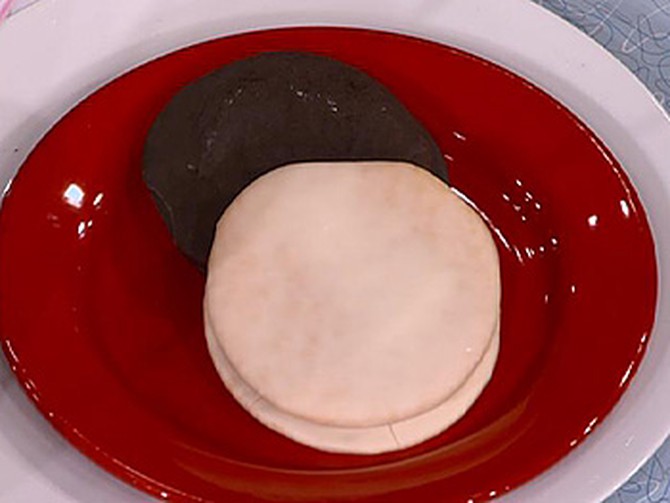
MoonPies—Part of the Working Man's Lunch
Another famous American food pairing is a MoonPie® with RC Cola. Marc says the sweet confection was invented by the Chattanooga Bakery Company to meet demand from local coal miners.
"One of the salesmen [asked the miners], 'Is there something that you want?' They said, 'We want something filling and something that fits into our lunch pail,'" Marc says. "The moon was coming up, and he said, 'I want it to be as big as the moon and twice as thick.'" That's when they invented the first official "moon pie"—two graham crackers filled with marshmallow and dipped in chocolate!
So how did RC Cola get involved? At the time, Marc says RC came in bigger bottles than Pepsi and Coca-Cola, so it was a natural choice. "[RC] cost 5 cents. The MoonPie was 5 cents, so for 10 cents, it was called the working man's lunch."
"One of the salesmen [asked the miners], 'Is there something that you want?' They said, 'We want something filling and something that fits into our lunch pail,'" Marc says. "The moon was coming up, and he said, 'I want it to be as big as the moon and twice as thick.'" That's when they invented the first official "moon pie"—two graham crackers filled with marshmallow and dipped in chocolate!
So how did RC Cola get involved? At the time, Marc says RC came in bigger bottles than Pepsi and Coca-Cola, so it was a natural choice. "[RC] cost 5 cents. The MoonPie was 5 cents, so for 10 cents, it was called the working man's lunch."
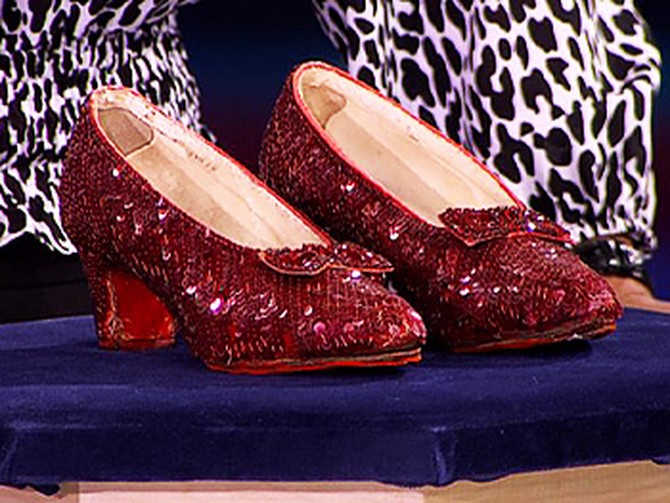
The Ruby Slippers Travel to Chicago
Drive-ins and hamburger joints aren't the only places to find American nostalgia. The Smithsonian Institution's National Museum of American History in Washington, D.C. is the home to many historic treasures, including memorabilia from many of Hollywood's beloved movies.
The ruby slippers Judy Garland wore in The Wizard of Oz are among the museum's most iconic Hollywood items. Dorothy's sparkly red shoes journeyed far from home for a rare one-time appearance on The Oprah Show—and they travel in style!
On the trip from the museum in Washington, D.C., the ruby slippers were accompanied by an entourage to rival an A-list celebrity's. For the voyage, the slippers were securely packed in a box. Then, with the protection of two armed guards, the ruby slippers flew first-class to Chicago.
The museum's director, Dr. Brent Glass, says they are priceless. "There's the value to the American public and really to the whole world because people treasure the memory of seeing The Wizard of Oz," he says. "The value, I think, is really important because they are a treasure of our youth. They're a treasure of the story of The Wizard of Oz and Dorothy's quest to find her way home."
Carefully handling the slippers using white gloves, Dr. Glass shows Oprah their felt soles. "They were worn by Judy Garland during her dance routines on the Yellow Brick Road because there's felt on the bottom of these slippers," he says. The felt helped muffle the sound of dance steps.
The ruby slippers Judy Garland wore in The Wizard of Oz are among the museum's most iconic Hollywood items. Dorothy's sparkly red shoes journeyed far from home for a rare one-time appearance on The Oprah Show—and they travel in style!
On the trip from the museum in Washington, D.C., the ruby slippers were accompanied by an entourage to rival an A-list celebrity's. For the voyage, the slippers were securely packed in a box. Then, with the protection of two armed guards, the ruby slippers flew first-class to Chicago.
The museum's director, Dr. Brent Glass, says they are priceless. "There's the value to the American public and really to the whole world because people treasure the memory of seeing The Wizard of Oz," he says. "The value, I think, is really important because they are a treasure of our youth. They're a treasure of the story of The Wizard of Oz and Dorothy's quest to find her way home."
Carefully handling the slippers using white gloves, Dr. Glass shows Oprah their felt soles. "They were worn by Judy Garland during her dance routines on the Yellow Brick Road because there's felt on the bottom of these slippers," he says. The felt helped muffle the sound of dance steps.
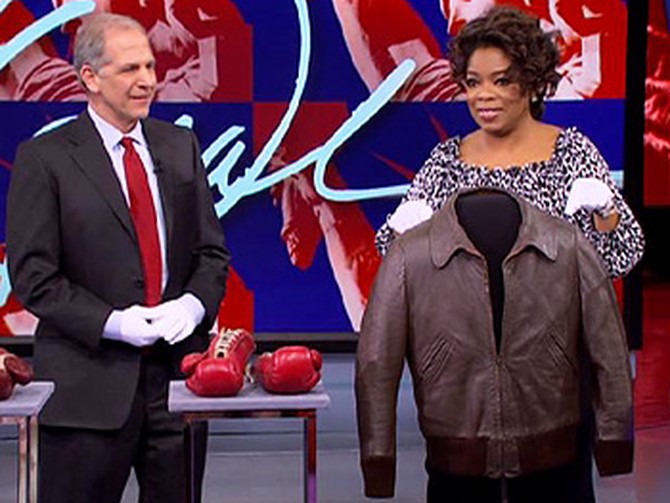
Fonzie's Jacket from Happy Days
Along with the famous ruby slippers, the National Museum of American History is home to many other items of pop culture legend.
One very cool addition to the collection is the jacket made famous by Henry Winkler when he played Arthur "Fonzie" Fonzarelli in the 1970s sitcom Happy Days.
One very cool addition to the collection is the jacket made famous by Henry Winkler when he played Arthur "Fonzie" Fonzarelli in the 1970s sitcom Happy Days.
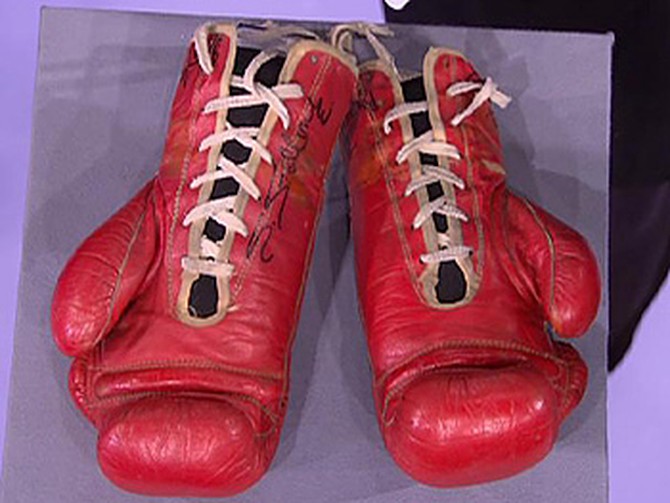
Rocky's Boxing Gloves
Another priceless addition to the Smithsonian collection is the gloves Sylvester Stallone wore in the 1979 movie Rocky II.
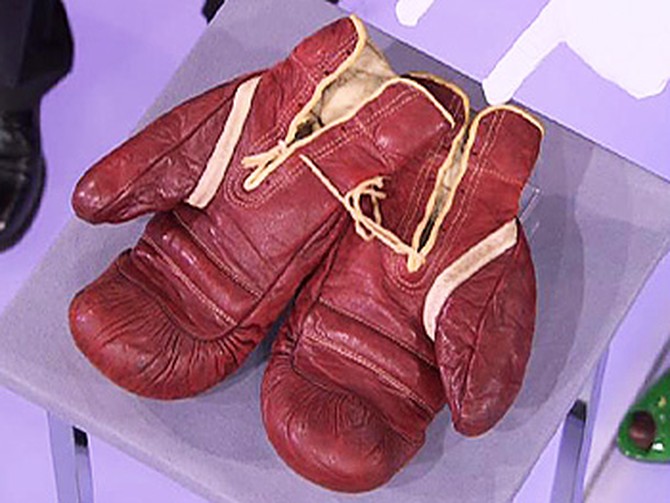
Joe Louis's Boxing Gloves
The National Museum of American History also boasts the pair of boxing gloves worn by the legendary heavyweight champion Joe Louis in a historic 1936 bout.
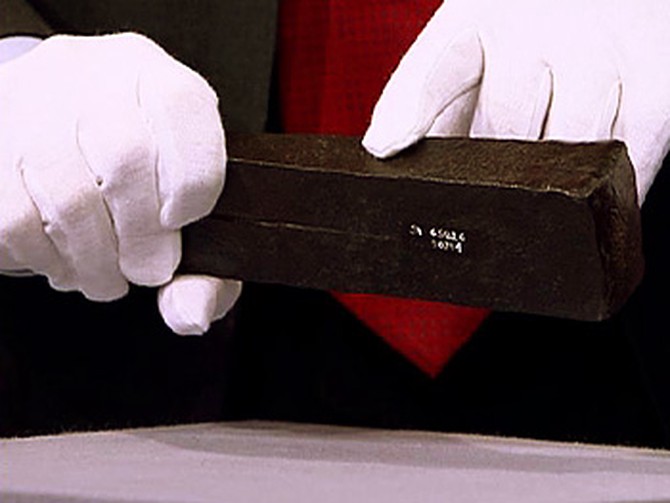
A Tool Used by Abraham Lincoln
The museum's collection also includes an iron tool used by President Abraham Lincoln when he was a rail splitter in the 1830s. "His iron will, I think, is represented here, and the fact that he led the country during a tremendous crisis," Dr. Glass says.
"We collect things like this to give people a real experience, an experience with authentic American treasures," he says. "People come to the Smithsonian and to the American History Museum to connect with the larger world of art and history and science."
"We collect things like this to give people a real experience, an experience with authentic American treasures," he says. "People come to the Smithsonian and to the American History Museum to connect with the larger world of art and history and science."
Published 01/23/2008

